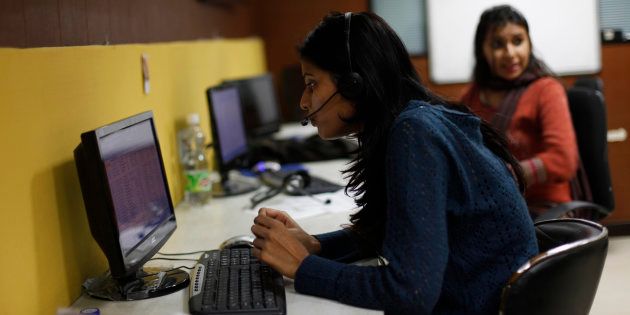
When the GDP numbers came out yesterday, the country was in for a shock. Economic growth had slumped to its lowest in more than two years in the March quarter, stripping India of its status as the world's fastest growing major economy.
Experts said that the impact of demonetisation and the scars it has left is finally revealing itself.
India's GDP grew at 6.1 percent year-on-year during the January-March period.
So, what's the relation between more women in the work force and a higher GDP? Recently, a World Bank report pointed out that if India's economy were to make better use of its women population, the economic growth rate would rise to over 10 percent.
While India was the world's fastest growing major economy until yesterday, it has one of the lowest rates of female employment. Only 26 percent of women work, largely in part time positions (21 percent), according to official data compiled by the International Labour Organisation. And, this trend has worsened over the last decade.
While the figure suggested by the World Bank might sound too optimistic, coming close to it may still be a possibility.
The report cited Bangladesh as an example. It asked the Indian government to adopt a more female- and labour-intensive export growth strategy along the lines being practiced in Bangladesh. Yes, the World Bank has basically asked the Indian government to look up to Bangladesh, a country which has been viewed as the poor stepchild of the global economy for decades.
But, it is not really. For two decades now, without being blessed with many natural resources — the Bangladeshi economy has been growing at 6 percent or more. India's neighbour created its success story with the help of its workforce, 43 percent of which comprises women.
Frederico Gil Sander, senior country economist, World Bank, observed that while a larger number of younger women in India were opting to study in schools, many were dropping out of the workforce because of the lack of job opportunities, and others due to rising income levels.
"One reason why women participation in the workforce has come down is because a larger number of younger women are opting to stay in schools," Sander said.
He's right. Women in India complete half as many years of schooling on average as men, and have less than half the share of men in the Gross National Income.
India stood at 131 out of 188 countries in the United Nations Development Programme's new Human Development rankings for 2015. When it came to gender parity, the ranking was even more depressing. The country is placed in the bottom in five categories, and is classified as having "low equality in HDI achievements between men and women."
India also ranked 125th out of 159 countries on the Gender Inequality Index on account of many teenage mothers, the low share of women in Parliament, and the low female labour force participation rate as compared to men.
Sander also said that amid lower rate of job generation, most regular jobs were being grabbed by men.
An ILO report had earlier said that 70 percent of women in India were neither working nor looking for work though it was very likely that the figure could largely be explained by social conditioning.
The World Bank report also noted the reasons why a large population of women chooses not to work.
"Concerns about women's safety are strong and often genuine, while flexibility, availability of childcare and adequate pay are important, given social norms that require women to reconcile work with household duties," the report said.
So demonetisation apart, a larger women work force would definitely mean a stronger economy.
Also see on HuffPost:
